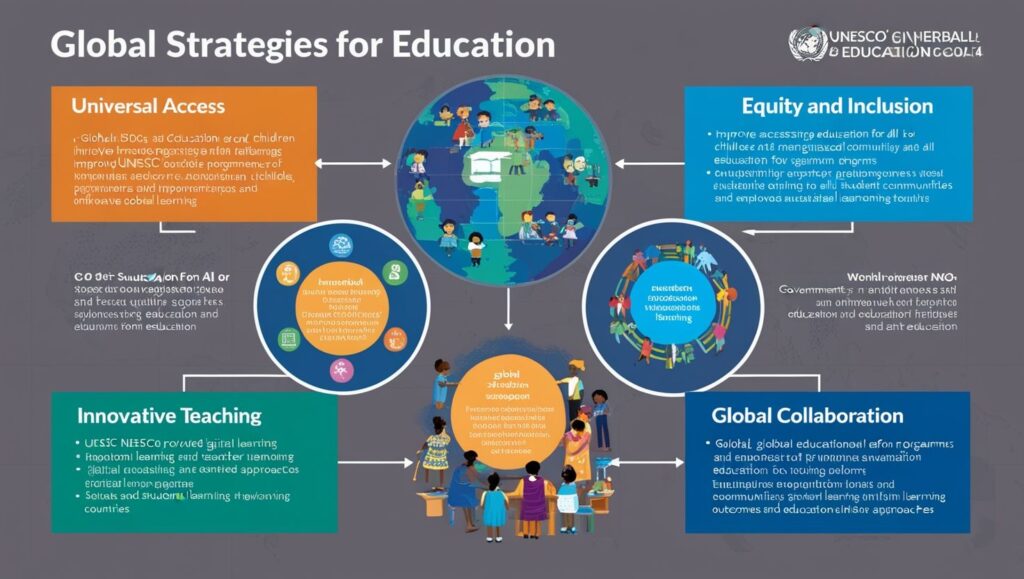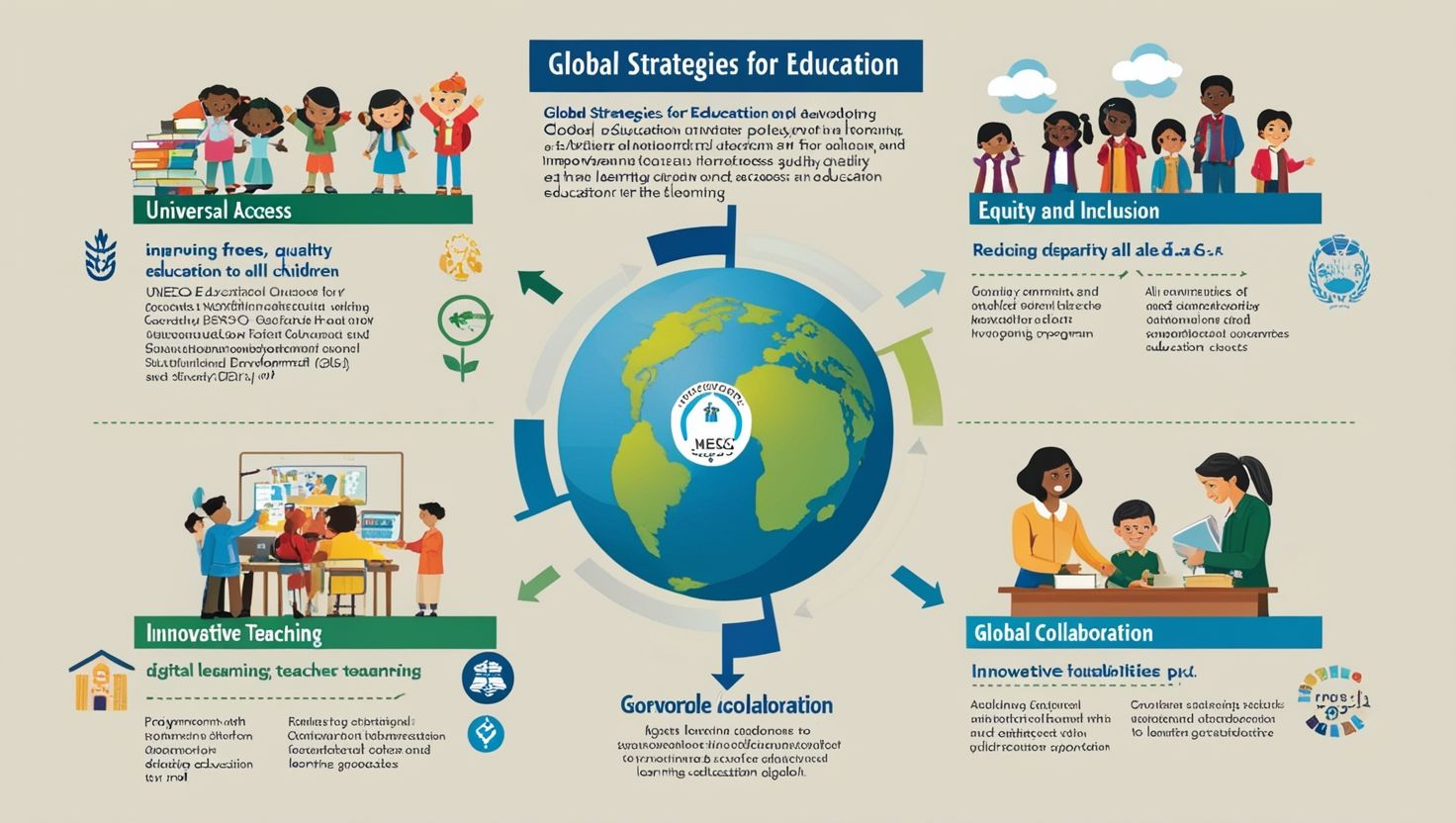Global Strategies for Education, Education in the mid-17th century reflected the diverse cultural, religious, and political landscapes of the world. The year 1650 sits on the cusp of significant intellectual developments in Europe, Asia, Africa, and the Americas. Though formal education systems as we know them today were far from universal, different regions employed various strategies to transmit knowledge, often heavily influenced by local priorities like religion, trade, and governance.
This article will explore four primary areas: European strategies, Asian educational structures, African oral traditions and Islamic education, and the educational systems in the Americas, both indigenous and colonial. While the concept of global education strategies may have been nascent in this period, examining the educational practices of different regions provides insight into the foundations of modern educational systems.
1. European Educational Strategies: The Rise of Formal Institutions
In 1650, Europe was at the tail end of the Renaissance and entering the Age of Enlightenment. These intellectual movements sparked the growth of education, particularly among the elite, clergy, and professionals. Universities, which had existed since the 12th century, played a key role in shaping educational strategies.
University Systems and Religious Education
The university system was central to European education in 1650, with prominent institutions like Oxford (founded in 1096), the University of Paris (established in 1150), and the University of Leiden (1575) becoming centers for theological, scientific, and philosophical studies. The curriculum largely centered on classical works, religious instruction, and the study of Latin, which was the lingua franca of educated Europeans.
The Catholic Church, through its Jesuit institutions, played a crucial role in education during this period. The Jesuits, with their commitment to rigorous scholarship and missionary work, established schools throughout Europe and its colonies, creating a framework for formal education that emphasized discipline, religious training, and classical education.
Scientific Revolution and Emerging Secularism
By the mid-17th century, the Scientific Revolution had begun to influence European educational practices. Figures like René Descartes and Isaac Newton were at the forefront of this shift, promoting a more secular and empirical approach to knowledge. While universities remained dominated by religious instruction, secular knowledge, particularly in the fields of mathematics, astronomy, and natural sciences, began to take root.
2. Asian Educational Structures: Confucianism and Scholarly Traditions
Asian education in 1650 deeply rooted in long-standing philosophical and religious traditions. Two of the most significant regions to consider are China and India, both of which had their unique strategies for educating their populations.
China: Confucian Ideals and the Civil Service Examination System
In China, education strongly influenced by Confucian ideals, which emphasized moral integrity, respect for hierarchy, and devotion to the state. The civil service examination system, which had been in place since the Sui Dynasty (581–618), reached its height during the Ming (1368–1644) and Qing (1644–1912) dynasties. This system provided a pathway for talented young men, regardless of their social standing, to rise to positions of power within the imperial bureaucracy.
The examinations were based on Confucian texts, particularly the “Four Books and Five Classics,” which prospective officials had to memorize and interpret. Success in these exams was a prestigious achievement and became a key part of Chinese educational strategy, focusing on producing civil servants loyal to the emperor and the state.
India: Hindu and Islamic Educational Traditions
In India, education split between Hindu and Islamic traditions. Hindu education, rooted in ancient texts like the Vedas and Upanishads, was conducted primarily in temples and ashrams.
Islamic education in India, on the other hand, concentrated in madrasas. These institutions focused on religious studies, particularly the Quran, Hadith (sayings of the Prophet), and Islamic jurisprudence. The Mughal Empire (1526–1857), which ruled India during this time, was a patron of both religious and scientific learning. The emperor Akbar, for instance, promoted the translation of various classical works into Persian and encouraged a more open-minded approach to education, blending Islamic, Hindu, and Persian traditions.
3. African Oral Traditions and Islamic Education
In 1650, Africa’s educational systems varied widely across regions. While formal written education was less common, oral traditions and Islamic schooling played significant roles in many parts of the continent.
Oral Traditions: Griots and Indigenous Knowledge
In West Africa, oral tradition was the primary means of transmitting knowledge. Griots, who were highly respected storytellers and historians, passed down the history, culture, and values of their people through generations. This system of education, while informal, was effective in maintaining social cohesion and cultural identity, especially in regions where written language was not common.
global education strategies , Griots served not only as educators but also as advisors to kings and chiefs. They preserved genealogies, laws, and important historical events, ensuring that this knowledge was passed down through successive generations.
Islamic Education in North and West Africa
Islamic education was also a key feature in parts of Africa, particularly in North and West Africa, where Islam had spread over the centuries. In cities like Timbuktu, renowned for its Islamic scholarship, madrasas served as centers of learning. Timbuktu, often referred to as the “Athens of Africa,” housed thousands of manuscripts and attracted scholars from across the Muslim world. These institutions focused on religious instruction, but they also covered subjects like mathematics, astronomy, and medicine.
The spread of Islam through trade routes, especially the trans-Saharan trade, helped establish centers of learning in cities like Gao, Djenne, and Kano. These institutions contributed to the preservation and dissemination of Islamic knowledge across Africa.

4. The Americas: Indigenous and Colonial Education
In the Americas, educational strategies in 1650 were shaped by the contrast between indigenous practices and the efforts of European colonizers to impose their own systems of education.
Indigenous Knowledge Systems
Before European colonization, indigenous societies in the Americas had their own forms of education, often based on oral traditions and practical learning. For example, the Aztecs and the Incas had sophisticated systems for transmitting knowledge about agriculture, astronomy, medicine, and governance. The Incas, for instance, used a system of quipus—knotted strings that recorded information—for educational and administrative purposes.
Education in indigenous societies was often a communal affair, with elders teaching young members of the community essential skills for survival, such as farming, hunting, and craftsmanship, as well as the spiritual and cultural traditions of the group.
Colonial Education: The Role of Missionaries
With the arrival of European colonizers, education in the Americas became a tool for religious and cultural assimilation. Catholic missionaries, particularly the Jesuits and Franciscans, established schools aimed at converting indigenous populations to Christianity. These schools, however, often suppressed indigenous knowledge and languages, focusing instead on teaching European languages, religious instruction, and European cultural norms.
In Spanish colonies, the Real y Pontificia Universidad de México (Royal and Pontifical University of Mexico), founded in 1551, was one of the earliest universities in the Americas. It was modeled after European universities and catered primarily to the sons of Spanish settlers. Similar institutions were established in Peru and other parts of the Spanish Empire. These universities focused on training the colonial elite in law, theology, and governance.
Conclusion
In 1650, education around the world was deeply influenced by local cultures, religious traditions, and political structures. While the concept of formal education was becoming more established in Europe and parts of Asia, other regions maintained rich oral traditions and community-based education systems. The strategies employed during this period laid the groundwork for the more structured and institutionalized education systems that would emerge in the centuries to come.
global education strategies, Education in 1650 was not universal, and it was often restricted to the elite or specific social groups. However, the diverse educational strategies of this time—whether through oral traditions, religious schooling, or formal institutions—played a crucial role in shaping the intellectual and cultural development of societies worldwide.
References
- Brockliss, L. W. B. The University of Oxford: A History. Oxford University Press, 2016.
- Elman, Benjamin A. A Cultural History of Civil Examinations in Late Imperial China. University of California Press, 2000.
- Robinson, David. Muslim Societies in African History. Cambridge University Press, 2004.
- Lockhart, James. Spanish Peru, 1532–1560: A Social History. University of Wisconsin Press, 1994.

6 thoughts on “Global Strategies for Education”
Comments are closed.